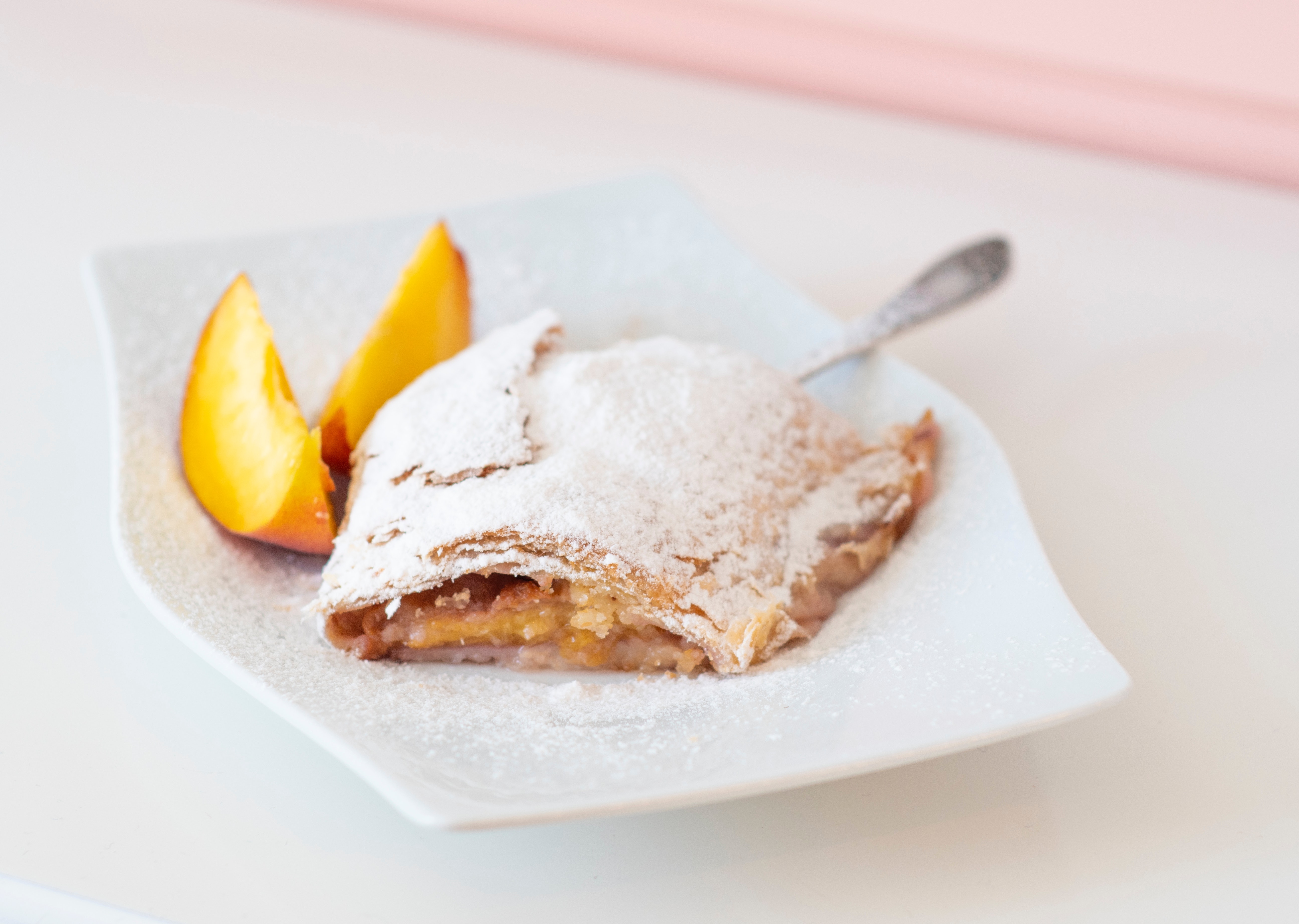CD SKILLS - Winning Gluten-free štrudel
07-11-2021
On the first weekend in October 2021, the traditional event "Kozjansko jabolko" took place. On this occasion, a competition was organized in the preparation and baking of apple strudel. This year, Majda Jurše and Ivica Milat from the Slovenian Society for Celiac Disease took first place and earned the title "Masters of strudel 2021". The winners were invited to the show "Dobro jutro", where they baked the winning gluten-free apple strudel in for the cameras.
INGREDIENTS
DOUGH
0,5 kg gluten-free flour SCHAR mix B
450 ml water
50 g olive oil
Pinch of salt
APPLE FILLING
2 kg apples
30 g granulated sugar
15 g freshly squeezed lemon juice
1 packet (10 g) vanilla sugar
Cinnamon to taste
APPLE STRUDEL Nutrtional value/100 g: 120 kcal, 24 g CARBOHYDRATE, 2 g FAT, 1 g PROTEIN
PROCESS
Mix water with olive oil and salt. Add flour and knead well. The dough can be kneaded by hand or in a food processor. If you opt for the classic kneading by hand, place the dough on a well-cleaned and floured (use the declared gluten-free flour!) kitchen counter or large cutting board and knead for a good 10 minutes or until the dough becomes completely homogeneous and pliable. Roll out the dough thinly into a rectangular shape. After the dough is rolled out, spread the apple filling evenly. Roll everything together softly and place in a baking dish. Bake the apple strudel at 175 ° C for 40 minutes. Leave it in the baking dish to cool until lukewarm. Sprinkle with powdered sugar before serving.
Recipe: Majda Jurše, Slovensko društvo za celiakijo (podružnica Celje)
Please, follow our instructions to avoid contamination with gluten, to be sure that your "štrudel" is 100% gluten-free and therefore safe for celiac disease patients.
Thoroughly clean work surfaces, inspect all kitchen utensils to make sure they are clean. Change your aprons, wash your hands and prepare clean kitchen towels and tablecloths. Countertops, food processors, rollers, baking trays, and the oven pose a risk of contamination. If you do not have a separate counter for preparing GF dishes for kneading, use a clean, large board, which is used only for GF dough. Keep the board protected from contamination when not in use. The food processor should be used only for GF foods, otherwise kneading is preferred by hand. The roller should only be used for rolling GF dough. Whenever possible use a baking pan that is only used for GF foods. Otherwise, check that it is really clean, that it has no cracks and edges where baked gluten-containing leftovers could linger, and line it with baking paper. If you do not have a separate oven that is used only for GF foods, turn off the ventilation before baking GF dishes. Bake in the highest position.
FLOUR: It is a high-risk product. The use of dedicated declared gluten-free flour is mandatory. Request the manufacturer's documentation and an analytical report or certificate confirming this from the supplier. If you buy flour in retail, choose from products with the inscription "gluten-free" and marked with a registered sign crossed out cereals. Check that the product does not contain gluten-free oats, as some patients with celiac disease also react in the same way to gluten-free oats as they do to gluten-containing oats.
OLIVE OIL: Vegetable oils are naturally gluten-free.
SALT and SUGAR: SALT: Salt and sugar are naturally gluten-free, but be careful to use clean uncontaminated salt and sugar (e. g. open a new package). Be careful - in the kitchen, the same spoon is often used for salt/sugar and flour.
APPLES: Use fresh fruit that is naturally gluten-free. Wash it under running water, peel, and cut on a clean board and with a clean knife. Frozen, pickled, dried, sliced , and mashed fruit pose a higher risk than fresh. If you use any processed/processed (e.g. frozen, pickled) fruit, require documentation from the supplier that it does not contain gluten (not even in traces) and that contamination is not possible.
LEMON JUICE: Squeeze the juice of fresh lemon. If you use industrially prepared juice or concentrates, require documentation from the supplier that it does not contain gluten (not even in traces) and that contamination is not possible.
VANILLA SUGAR: Flavoured sugars (vanilla, rum) and flavourings in powder or liquid pose a risk of contamination during production and packaging. You must obtain documentation from the supplier that they do not contain gluten (not even in trace amounts) and that contamination is not possible. If you buy it in retail choose only those products that are labelled "Gluten-free". You can also make vanilla sugar yourself. Wash vanilla sticks, which are naturally gluten-free, under running water, dry them with a clean paper towel, cut them in half, put them in a dry clean glass with sugar, and wait for the sugar to absorb the aromas.
CINNAMON: is naturally gluten-free but there is a risk of contamination during the packaging. You must require documentation from the supplier that it does not contain gluten (not even in traces) and that contamination is not possible.
We wish you successful baking:)


Photo: Majda Jurše and Photo by Adrian Frentescu from Pexels
Instructions and nutrirional value calculation by Kaja Kranjc.
